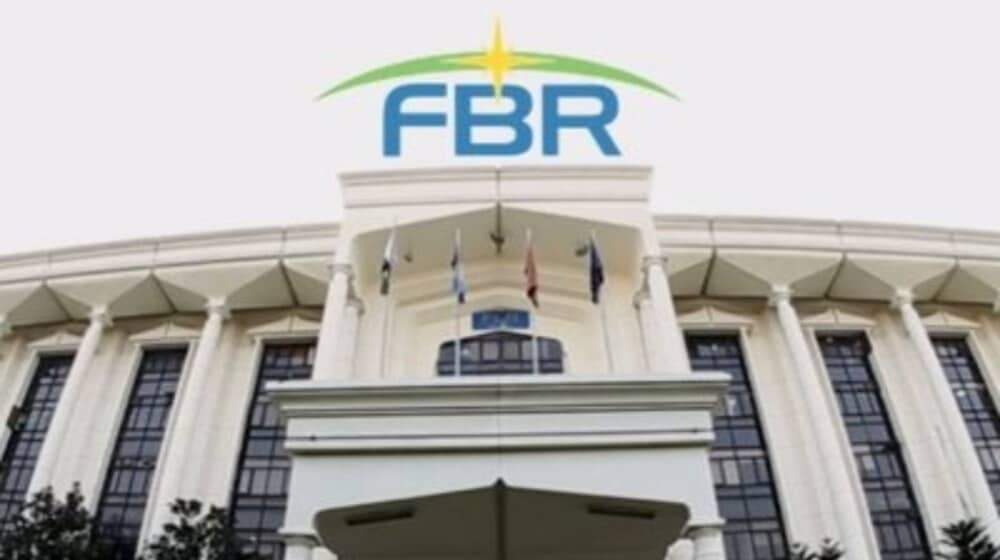The inquiry committee on the implementation of the Track and Trace system has recommended the installation of independent production monitoring devices at the manufacturing premises of cement, fertilizer, and sugar sectors for production monitoring.
The inquiry committee on the implementation of the Track and Trace system constituted by former Prime Minister Shehbaz Sharif has submitted detailed recommendations on the revamping of the said system in the cigarettes, sugar, cement, and fertilizer sectors.
The FBR’s report on the implementation of the Track and Trace system recommended that in cement, fertilizer, and sugar sectors the issue is not of spurious or smuggled products. The issue is of non-tax paid products being sold.
To curb this, production monitoring is critically important in these sectors. It is recommended that independent production monitoring devices (such as sensors at hoppers) be installed to have a cross-check with Unique identification Markings (UIMs) to ensure that full production is documented and tax-paid.
It was observed that there lies a confusion between the Federal Board of Revenue (FBR) and industry on who is responsible for purchasing of the applicator machinery which requires review and legal opinion to resolve this confusion, the report said.
The UIMs being applied on products contain 21 alpha-numeric characters, which are only readable via the available app. The manual application of tax stamps has been observed in small tobacco manufacturers which negates the entire purpose of the Track & Trace System. The report said that the tax stamps/stickers are being imported from abroad, and there is no option explored by the licensee to localize them.
After visiting of different factories, it is observed that each sector has different environmental dynamics and the UIM sticker option cannot be successful in each sector. In the fertilizer sector, there is a dire issue of reel breakage as the applicator timer is not in sync with the conveyor belt, therefore it affects the overall efficiency of the sector.
It was observed that the placement of sacks/bags on conveyor belts is not standardized which is the root cause for no-read applicator issues.
The report said that the wastage at factories is not being reconciled via an automated mechanism and requires up to 60 days where FBR officials have to do an on-site visit and report the same to Headquarters for approvals.
The following are recommendations of the committee on the implementation of the Track and Trace system that may be considered and implemented:
- Revamp of the entire existing process and after the due deliberations, the existing mechanism should be customized for each sector. Customization may include using other UIM identifier options e.g. Bar Codes or localized Digital-markers etc. that are able to contain unique UIM information within each code, for each sector based on the environmental and existing process and implement a customized solution to make it successful. This should be done in consultation with each sector industry.
- The app-based solution for verification is limited as it requires using a high-end smartphone that offers a good camera scanning mechanism. This limits the process of post-application verification. Apart from reviewing the App and making it more robust and responsive, multiple mediums should be developed on an immediate basis including the implementation of SMS-based USSD code verification whereby entering the UIM via a 2G phone allows for SMS-based verification. UIM verification mechanism option via web-based solution available through the FBR website for both FBR officials and the general public enabling them to authenticate the UIM for a specific product may also be adopted.
- Re-mapping of existing As-Is process and introducing more details at the time of applying for UIMs via an online portal. The details should include complete process mapping including Brand, Specific product, Factory details, etc. so this information is captured at the start and is cross-checked via 40C implementation at gate-out and different distribution touch points.
- Awareness campaigns via bulk SMS broadcast, social media video tutorials, and digital and print media should be run to educate the general public on the importance of buying products using UIM labels thereby creating awareness and buy-in of the general public as well as deterrence from replica, informally imported products.
- The reporting dashboard provided to FBR offers very limited KPIs, and limited visibility and does not offer any business intelligence that can be helpful for carrying out structured enforcement actions by FBR. It is recommended that there should be a complete revamp of the existing dashboard provided by M/s Authentix which is very limited and does not provide geographical-based insight, no business intelligence reports or analytics that can help FBR make more educated decision-making and carry out targeted enforcement actions based on the analytics provided through detailed dashboard.
- Formulation of a permanent oversight committee to monitor the entire implementation of these recommendations. The committee should include technical experts from Government and Private sectors.
- Mandatory brand licensing built within the Track and Trace System online portal where in accordance with the STGO No 7 of 2021 all existing and new manufacturers of specified sectors are required to register their brand of each product with FBR before selling the same in the market. Registration of brands with FBR would help track the production and sales of manufacturers and more importantly, curtail the sale of illegal tax-evaded brands. All the brands applied and allowed by FBR to be published on the FBR website for general public awareness. If any unregistered brand’s product is found in the market, the Inland Revenue Enforcement Network (IREN) may have the authority to confiscate all of the available stock in the market. This enforcement should be immediately implemented and analytics provided within the TTS portal should be used for carrying out targeted enforcement actions. Furthermore, the excise and sales tax collected should be against each brand to estimate the market size and revenue collection more accurately. Brand licensing will be an effective tool to ensure that as well.
- Introducing Digital Invoicing mechanism to ensure that brand-wise tax invoices of all products especially within the tobacco sector should be generated. This e-invoicing integrated within the TTS will improve transparency and reporting of tax invoices and can lead to focused enforcement action against the evaders. Digitally generated invoices through FBR’s TTS portal must have a unique code which may also include information of the brand and quantity being transported. Enforcement officials must have access to the portal to be able to verify the authenticity of the invoice and also check the brand and quantities being transported.
i) There is a major skill level gap observed within the current team supervising the project. It is recommended that an independent project office be established and FBR should hire a project team from the private sector having specialized skills and experience of at least 5 years or more in this field and have worked on modem ICT technologies etc.
The report noted that the applicator machines are very costly and manufacturers are forced to buy such machines from different vendors, where each vendor machines offers different standards. Therefore, FBR and licensee should standardize applicator machines, etc. and GoP should offer such machines on a discounted or installment basis so it does not create a burden on the manufacturer which is one of the major reasons for many manufacturers not coming within the TTS ambit and resisting to sign the TPA.
The FBR should also install on-site cameras with a backup recording mechanism whereby the FBR can monitor each line remotely to keep a stronger enforcement action.
The licensee should be asked to develop SMS based reporting mechanism of consolidated hourly statistics for each manufacturer and these hourly reports should be transmitted to FBR-designated official numbers in HQ as well as on the field so they can carry out enforcement actions based on this data. Furthermore, business intelligence should be built within the FBR-provided dashboard, where the system should automatically analyze each hour, day, and month of production and if there are variations observed it should trigger concerned FBR teams via SMS to carry out random inspections.
The licensee should upgrade their systems so that in case of no-reads of UIM an auto alarm should be generated at the location of the licensee as well as to the FBR dashboard so they can rectify the same at the spot. The licensee should also study the timer for each conveyor belt and place marker so placement of bags should be done within the marker limits to mitigate the no-read issues being faced.
The FBR, the licensee should carry out best practices being adopted by different factories from each sector, consolidate the same for each sector, and implement the best practices at par for that specific sector in consultation with the industry.
The on-site inspection mechanism is purely manual, there is a need to digitize the same mechanism and provide FBR with tools e.g. Scanners, RFID guns, etc. that allow them to scan the production which should be integrated with the FBR dashboard so near real-time field results are available within FBR dashboard.
The committee has analyzed best international practices from similar markets as well as advance markets and the following is suggested
It was determined that the application of tax stamps within the tobacco sector is in line with best international practice, where the same mechanism is being followed both in similar markets (Bangladesh, Turkey, Ghana, Kenya, etc.) and advanced markets (European Union).
However, for cement, sugar, and fertilizer sectors no evidence of tax stamps being used was found and this is the first of its kind of implementation being done in Pakistan. Therefore, as recommended in the way forward above, this should be studied and a customized local solution should be implemented that works as per each sector’s conditions, within 180 days.
The report concluded that the Track and Trace System in place is far from perfect. However, it has taken FBR 10-15 years to implement this concept. If derailed it will take years to put it back on track. The need is to make improvements within the existing systems based on recommendations.






















